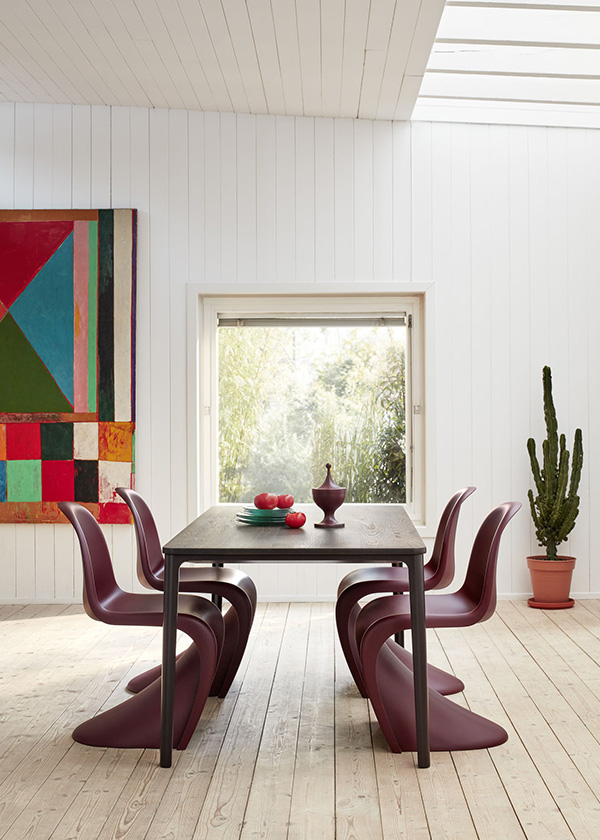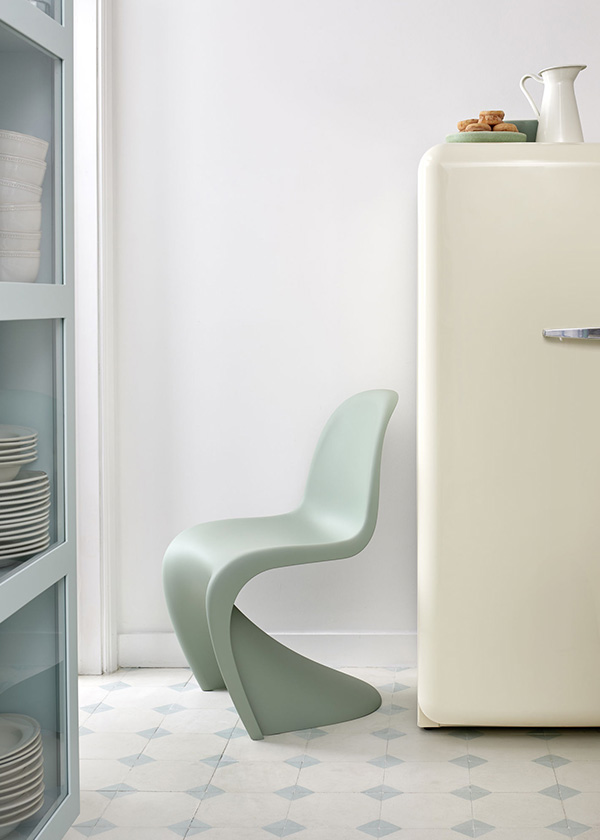Design history: the cantilever chair
If someone asked you to name the most enduring design to result from the modernist movement, it would have to be the cantilever chair.
Pushing materials to their limits, the minimal silhouette of the cantilevered chair has fascinated designers and consumers alike for the past 100 years.
Unlike most chairs, cantilevered designs are not supported by the typical four legs, instead supported by an L-shaped structure that attaches at only one side of the seat. Whether constructed from steel, wood or plastic – cantilevered designs give the impression of almost defying gravity, the seat supported by an invisible column of air.
A chair typology with a fascinating history, cantilever chairs are a relatively recent invention in the world of furniture design – the first cantilevered designs only appearing around 100 years ago. From copyright feuds to production issues, join us to discover what has shaped this iconic silhouette.
The forgotten pioneer
A name not often heard, despite the fact he pioneered one of the great innovations in 20th Century seating design – Mart Stam was a Dutch architect, urban planner and furniture designer. Credited with producing the first tubular steel cantilever chairs in the early 1920s, his designs sparked an idea that would captivate designers for the next century.
However, his journey wasn’t a simple one. Also working on designs for cantilevered chairs at the time was a Bauhaus professor called Marcel Breuer. This resulted in a copyright feud between the two designers in the 1920s, a battle that Stam won.
Bauhaus inspiration
Hungarian born designer Marcel Breuer was an early student of the Bauhaus, attending the school between 1920-24 before being appointed head of the carpentry workshop in 1925, aged only 23. Supposedly inspired by the frame of a bicycle, Breuer became interested in finding ways tubular steel could be used within furniture design.
Strong and lightweight, this material allowed for minimum use of structure, whilst providing maximum strength. His most well-known furniture designs include the Wassily Lounge Chair, Laccio Tables and of course, the cantilevered Cesca Chair.
One of the most important figures in modernist design and the last director of the Bauhaus, Ludwig Mies van der Rohe also began taking an interest in cantilevered furniture around this time. Author of the phrase ‘less is more’, the cantilevered typology fit perfectly with Mies’ minimal philosophy, its gravity-defying form making do with the least possible amount of structure.
Also exploring the capabilities of tubular steel, Mies went on to develop designs such as the Brno Armchair, MR Chair and MR Chaise Longue.
Mid-century icons
There were some designers however who rebelled against the use of rational and cold tubular steel, turning the focus onto the capabilities of a softer and more natural material, wood. Finnish designer Alvar Aalto adopted a more human-centric approach to seating design, developing cantilevered chairs such as the 42 Armchair and 43 Lounge Chair from solid, steam-bent birch. Frank O. Gehry also opted for differing materials to steel by creating the 70s Vitra Wiggle Side Chair using corrugated cardboard with edges made of hardboard.
Architect Gerrit T Rietveld took the cantilevered typology one step further with the introduction of his instantly recognisable Zig-Zag chair in 1934. Simple and elegant, this chair has a slim, angled profile yet is still surprisingly comfortable, and looked completely different to the cantilevered forms which preceded it. It became an instant success and remains in production today.
A revolutionary form
From steel to wood and then to plastic - the Vitra Panton Chair was conceptualised in the 1950s by Danish architect Verner Panton and was the first cantilevered design to be made from a single, continuous piece of moulded plastic. Its anthropomorphic shape and slightly flexible polypropylene shell give this chair great comfort, but it took years of innovation to put the chair we know and love today into production.
Years ahead of its time, this iconic sculptural form received a lot of media attention and became a symbol of the progressive Sixties era. You can read more about the history of the Vitra Panton Chair in our design icon journal feature.
Believing that an original will always retain its worth - Vitra offer a ten-year manufacturers warranty on selected designs in their collection, including the Panton Classic Chair. Simply register your product within three months of purchase.
Viewed through a contemporary lens
Thanks to recent developments in injection-moulding technology, Vitra have continued the evolution of the cantilever chair in 2021 with a brand-new release. Designed by Jasper Morrison, the EVO-C Chair is made from 100% recyclable polypropylene which forms a hollow, load-bearing structure. Today’s technological improvements mean that plastic structures can now achieve the same strength and rigidity as tubular steel – opening up a world of new possibilities for the cantilevered chair.
We hope you enjoyed this brief look into the history of this iconic silhouette. What's your favourite cantilever chair design? Let us know by tagging us on Instagram at @nest_co_uk. Discover our full collection of timeless chair designs here.










